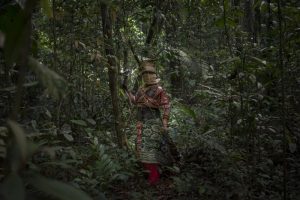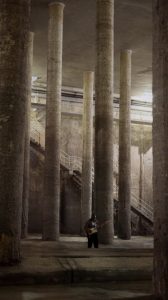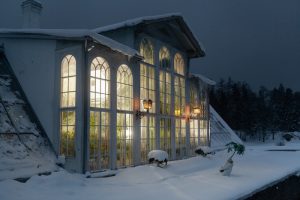An exhibition at Z33 in Hasselt explores the ecological and humanitarian dimensions of the raw materials necessary to sustain our modern, digital and so-called green lifestyle.
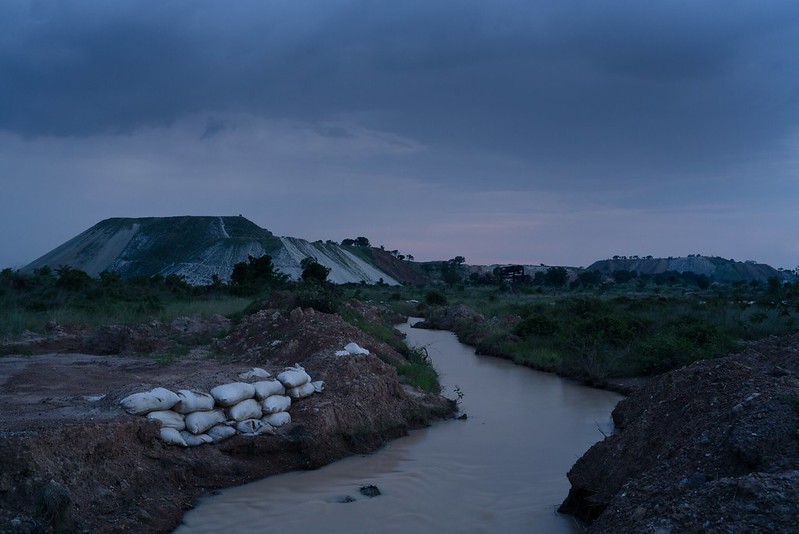
Alexis Destoop, The Pits, 2022. Photo: the artist
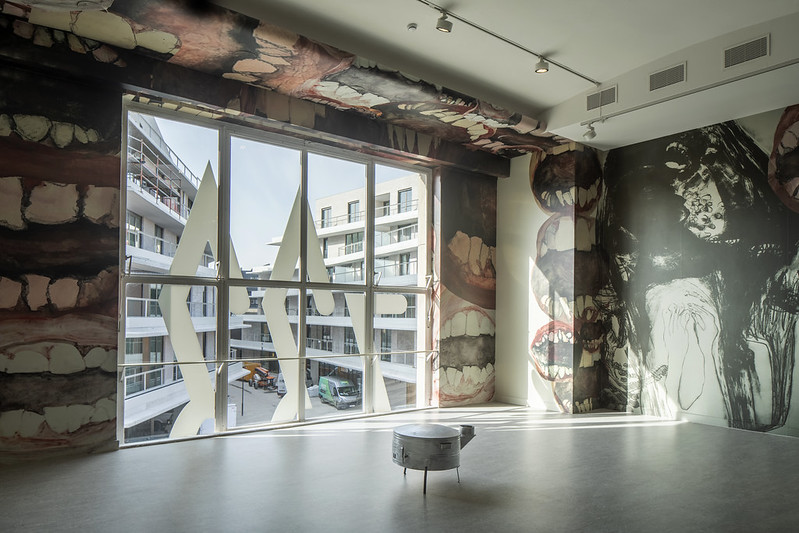
Pélagie Gbaguidi, Hunger, 2022. Installation view at Z33 House for Contemporary Art, Design & Architecture. Photo: Kristof Vrancken
On-Trade-Off, the co-curators of the exhibition together with Ils Huygens from Z33, is an artist collective whose members hail from the Democratic Republic of the Congo, Belgium and The Netherlands. The starting point of their research is Manono, a former mining town in the southeast of the Democratic Republic of the Congo. In the early 20th century, the town was booming. Belgian colonisers built mining structures – including foundries, dams, housing and railway- to exploit the cassiterite deposit. Then came the independence of the country, falling prices for tin, civil wars and Manono became a sleepy down with a decaying mining infrastructure. Many of the residents survive today by mining for cassiterite in an abandoned quarry. Usually without adequate tools or protection.
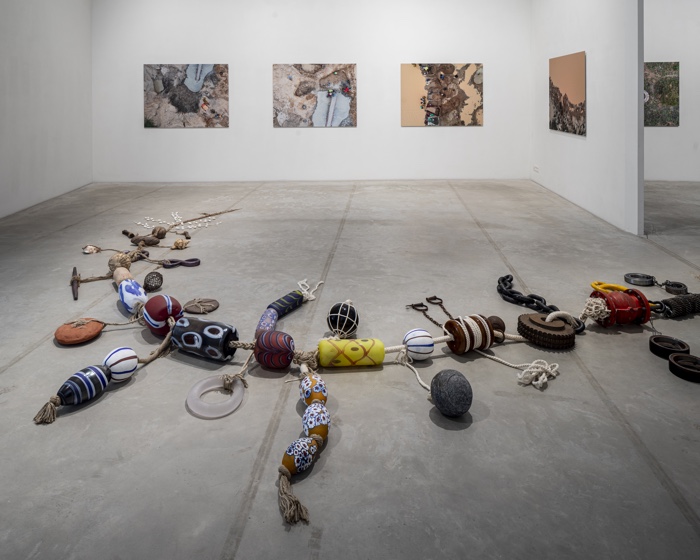
Maarten Vanden Eynde, A Chain of Events. Installation view of On-Trade-Off. Charging Myths at Z33 House for Contemporary Art, Design & Architecture. Photo: Kristof Vrancken
Australian company AVZ Minerals has recently discovered lithium reserves in the region. Their experts estimate that it might be the largest undeveloped resource of lithium in the world. AVZ plans to mine the area and build a plant to crush, grind and process the ores. If the authorities issue the licence, lithium production might turn the fate of Manono people around. They will get jobs and they are also promised roads, schools, hospitals, etc. The production of electric cars has turned lithium into a new kind of gold with an aura of sustainability.
Mining and processing the metal, however, AVZ at great ecological and human rights costs. Its extraction is associated with water pollution and greater difficulty for local farmers to access water, among other problems.
In spite of the riches that the lithium exploitation can bring, it is difficult to be entirely optimistic for the future of Manono. How will the resources be redistributed? How fair will the labour conditions be? What is the long-term commitment of the mining companies to preserve local ecosystems? Will history repeat itself?
Right now, mining companies scramble over the region recalls colonial times. Everyone wants a piece of the DRC. In the 19th and 20th centuries, the region was looted for ivory, rubber, diamonds and precious woods. Then came cobalt, tantalum, copper and other minerals that form the backbone of digital life. Will lithium extraction become yet another textbook case for resource curse in DRC? How long will our quest to lead a “sustainable” life be at the expense of far away communities?
These are some of the questions explored by Charging Myths. On-Trade-Off. The artists who are part of the On-Trade-Off collective do not come up with a solution to all the problems caused by extractivism in DRC but their ethos provides a critical “artistic counterbalance to the logic of exploitation, by focussing on transnational exchanges, knowledge sharing and fair practice.”
I want more exhibitions like Charging Myths. On-Trade-Off. I want more cultural events where Western and non-Western actors enter into a mutually fruitful dialogue, where African artists are not added as an afterthought to tick all the “inclusive” boxes. I also want more exhibitions where artists investigate troubling issues but do not claim that “raising awareness” is enough.
Here is a quick and subjective tour of the exhibition:
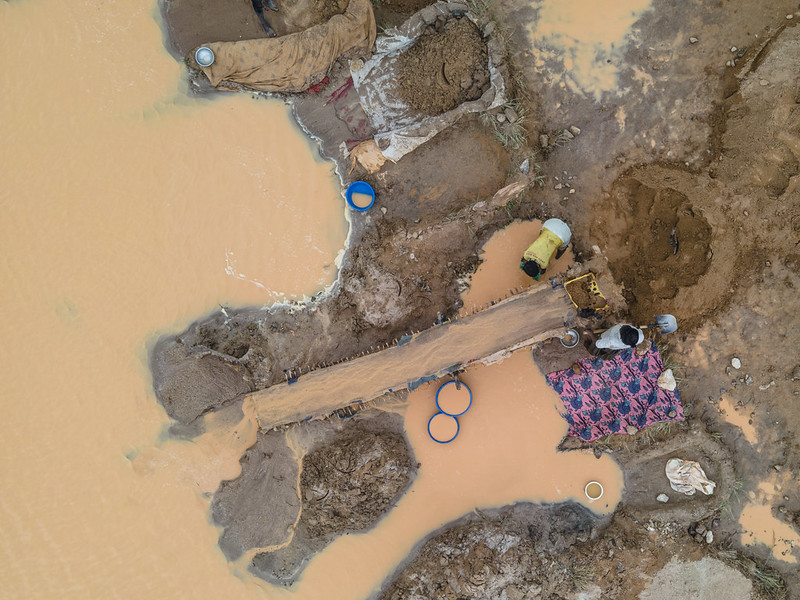
George Senga, Tshanga-Tshanga (Mille-Bêches), 2022. Photo: the artist
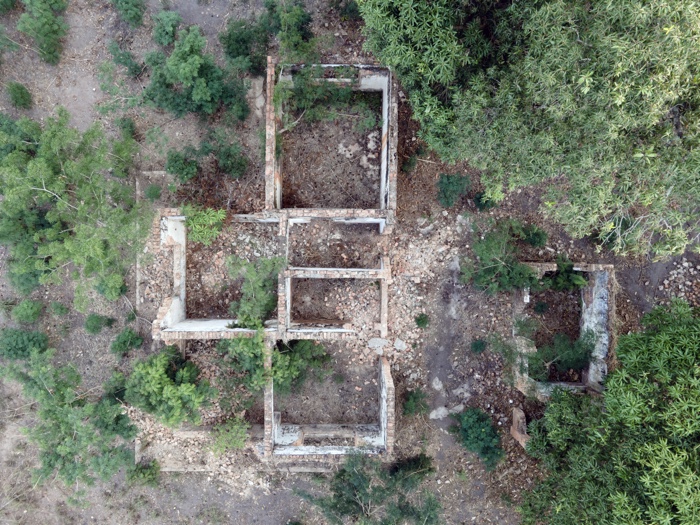
George Senga, Tshanga
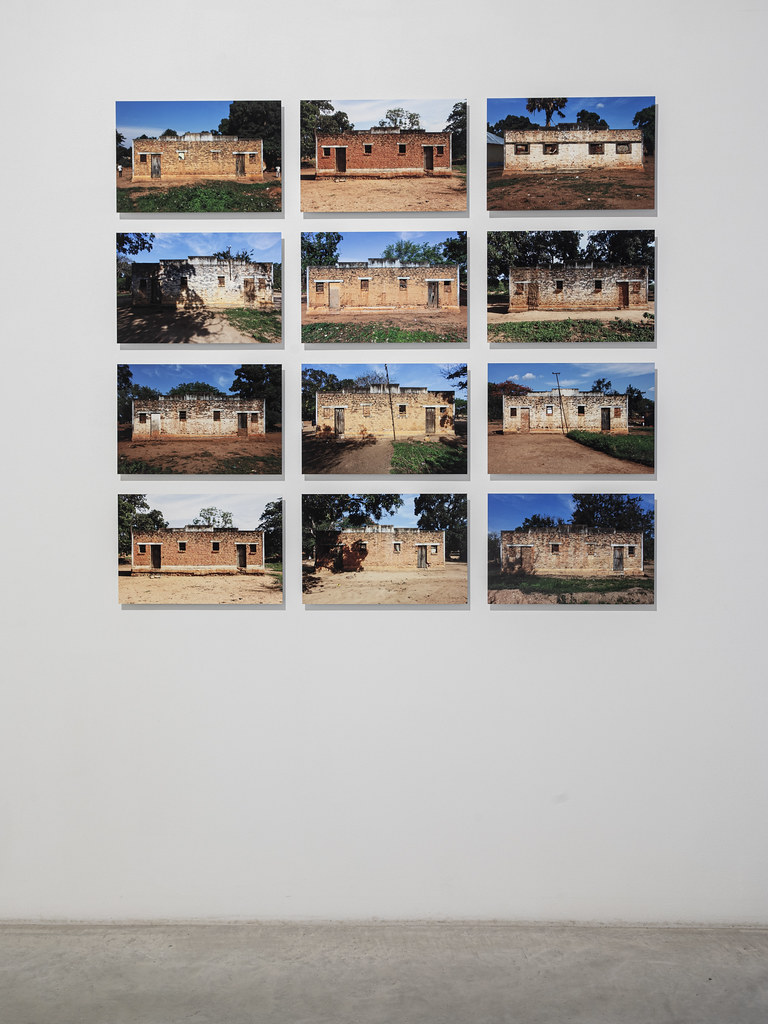
George Senga, Tshanga (Barsin), 2022. Installation view at Z33 House for Contemporary Art, Design & Architecture. Photo: Kristof Vrancken
Industrial ruins, artificial lakes, dilapidated neighbourhoods, women still mining cassiterite and tantalum by hand, etc. Georges Senga’s photos depict what is left of Manono, what Belgian company Géomines -which started mining there in the early 20th century- left behind when they withdrew from the area. Senga’s snapshots catch a moment hovering between the past and a future transformed by a massive extraction of lithium.
The photos of the architecture built by Géomines are particularly arresting. The ruins of the upscale neighbourhoods where the engineers and directors used to live are shot from above, echoing perhaps the kind of top-down approach mining companies have when they look at the Earth. When the company left, the army occupied parts of the neighbourhood to control ethnic conflicts. As for the working-class homes, they are photographed from the ground which gives them a more mundane dimension. Members of the local population still live in some of the homes, but most have been abandoned since the last war.
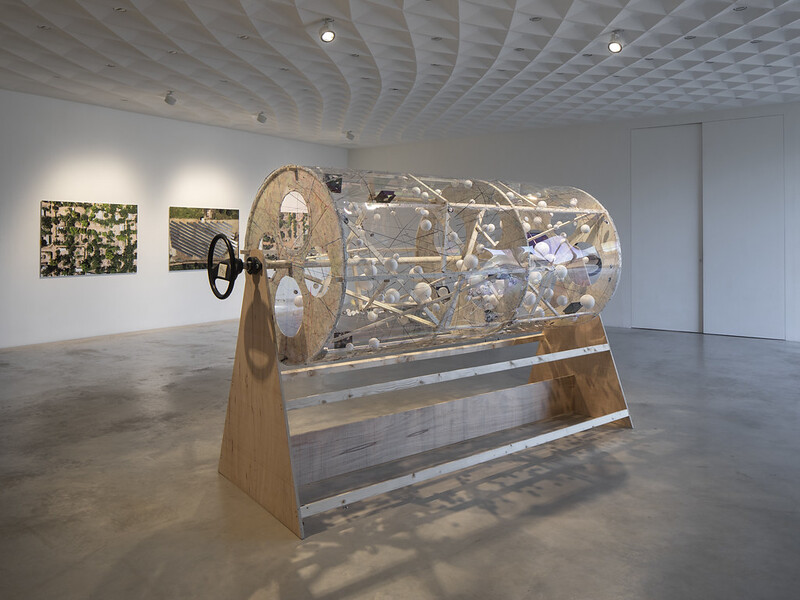
Jean Katambayi Mukendi, The Concentrator, 2022. Installation view at Z33 House for Contemporary Art, Design & Architecture. Photo: Kristof Vrancken
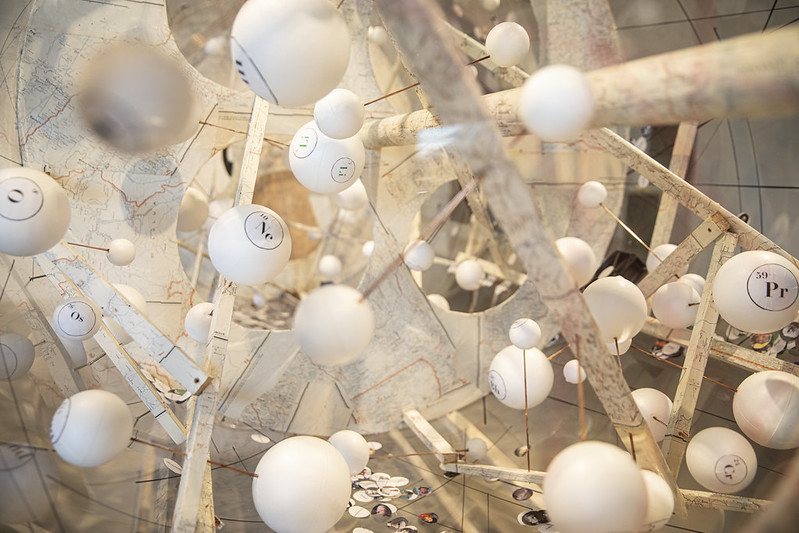
Jean Katambayi Mukendi, The Concentrator (detail), 2022. Installation view at Z33 House for Contemporary Art, Design & Architecture. Photo: Kristof Vrancken
The relics of the mining industry are a great source of inspiration for Jean Katambayi Mukendi. The Concentrator is an industrial apparatus used in the mining industry to separate commercially valuable minerals from their ores. He recreated a concentrator on a smaller scale using discarded materials found around Hasselt where he was in residency. Inside the machine, Mendeleev’s elements, formulas, portraits of chemists and scientists are shuffled like in a bingo mill.
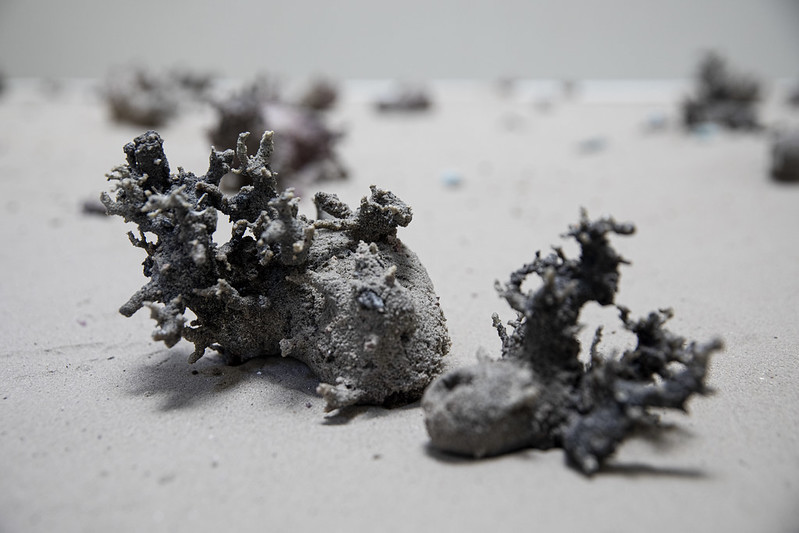
Marjolijn Dijkman, Cloud to Ground #1 (detail), 2021. Installation view at Z33 House for Contemporary Art, Design & Architecture. Photo: Kristof Vrancken
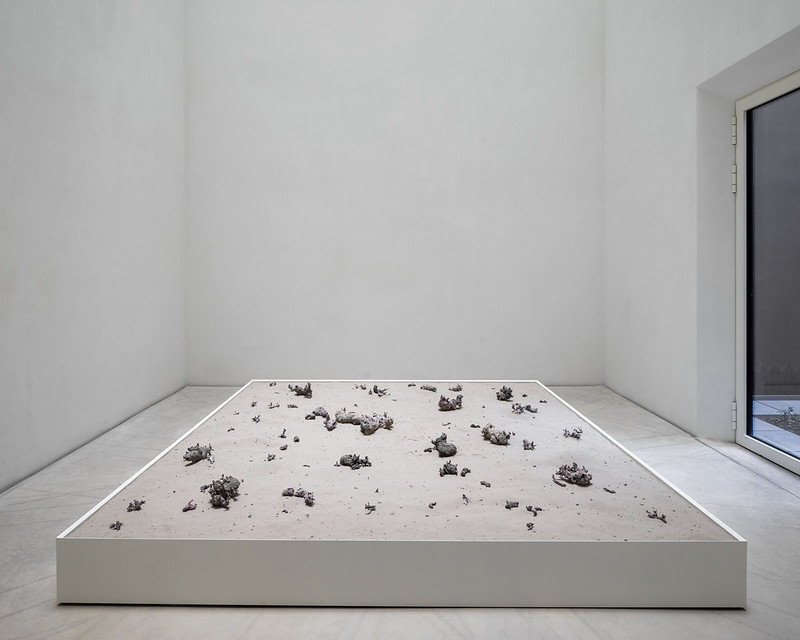
Marjolijn Dijkman, Cloud to Ground #1, 2021. Installation view at Z33 House for Contemporary Art, Design & Architecture. Photo: Kristof Vrancken
Fulgurites are masses of sand that coalesce when lightning strikes the ground in places where the soil contains quartzose or silica-rich sand and sediments. Inspired by this phenomenon, Marjolijn Dijkman worked with professional electricians to “sculpt” artificial fulgurites. She used high voltage to hit soil from Belgian and Congolese mining areas to create an eerie landscape covered in delicate fulgurites. They evoke energy, a force that is as intangible as it is essential to our daily life. A force that is pervasive but which origin is increasingly the source of debates and contestation.

Maarten Vanden Eynde and Musasa, Material Matters
[Li3], 2018 – 2019. Photo: Philippe de Gobert
The painting above is part of Material Matters, a series of compositions, each representing a chemical element from the Mendeleev’s periodic table. The chemical elements chosen are all liked to the raw materials that power our modern, Western and hyper-connected existence: iron, gold, uranium, tin, cobalt, tantalum, silicon, lithium, copper, etc.
The drawings, pictograms and symbols form a visual rebus that hints at the origin (which is often the DRC), transformation and impact of the material. The lithium painting, for example, suggests the promise of clean energy and luxury cars as well as the scarification of the landscape caused by the mining industry and the chemical processing of these materials.
The paintings, a collaboration between Congolese painter Edmond Musasa Leu N’seya and Maarten Vanden Eynde, are based on old school educational wall charts.
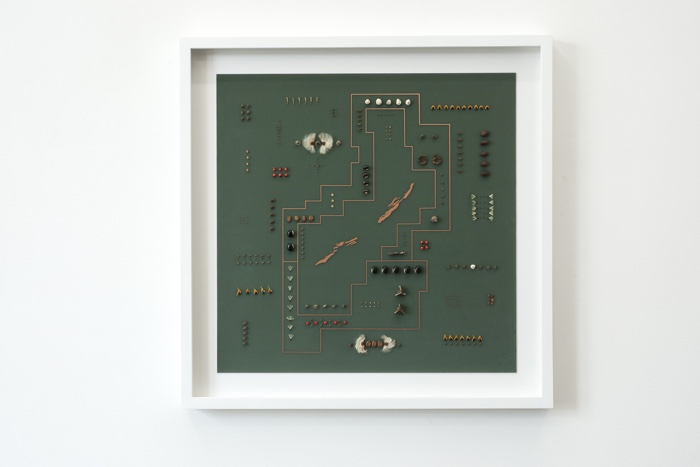
Maarten Vanden Eynde, Future Flora: Manono, 2019. Photo: Philippe de Gobert
Future Flora: Manono maps the vast Lithium ore reserves as well as the outlines of the mining concession of AVZ Minerals in Manono. The map takes the form of a Printed Circuit Board where local seeds and grains represent transistors and electrical components. Together they mimic a lukasa, a ‘memory board’ used in the Kingdom of Luba (now part of DR Congo) in the nineteenth and twentieth centuries as archives for the topographical and chronological mapping of significant events and as a means of remembering important people, places and migration routes.
The seeds act as a backup for rare endemic plant species that thrive in the presence of certain minerals in the soil. Ideally, they would be used at a later stage to restore some of the original flora when the mining activities have ended.

Dorine Mokha & Elia Rediger, Hercules of Lubumbashi, 2019
Dorine Mokha & Elia Rediger, Hercules of Lubumbashi (trailer), 2019
Congolese choreographer and dancer Dorine Mokha, whose parents worked in a mining company all their lives, teamed up with Swiss composer and musician Elia Rediger to create an oratorio piece based on Handel’s Hercules. Their musical composition, however, focuses on Congolese mines and on the environmental and humanitarian costs of the ruthless extraction of minerals by international corporations. GLENCORE is one of those global companies whose mining activities in the DRC are associated with corruption, tax evasion and ecocide. The choir of miners is thus calling for a Hercules that would save the Congolese people from extractivist and ICT corporations. Since the Hercules of Lubumbashi doesn’t come, maybe Congolese people should take the matter in their own hands?
The choir in the video is a reference to the former orchestra of Gécamines, the Belgian mining company that started the large-scale extraction of copper and cobalt in the Katanga province a hundred years ago.
More images from Charging Myths. On-Trade-Off:
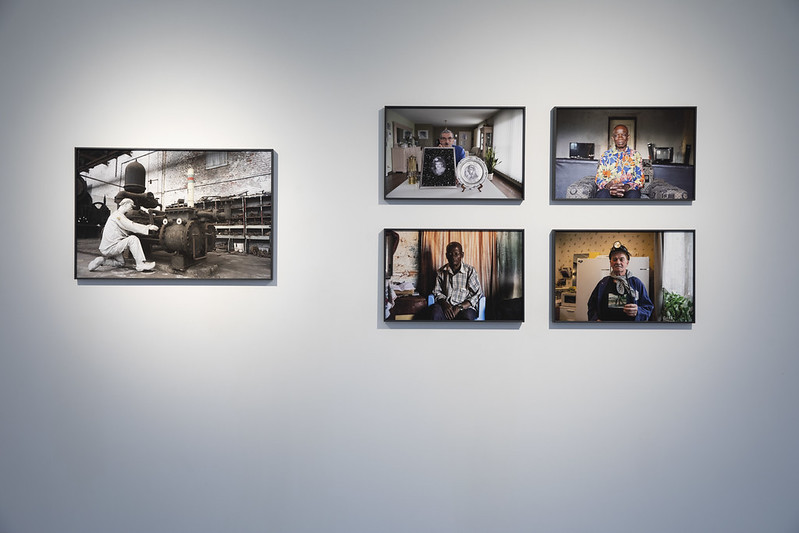
Alain Nsenga, Fantasmagoria, 2022. Installation view at Z33 House for Contemporary Art, Design & Architecture. Photo: Kristof Vrancken
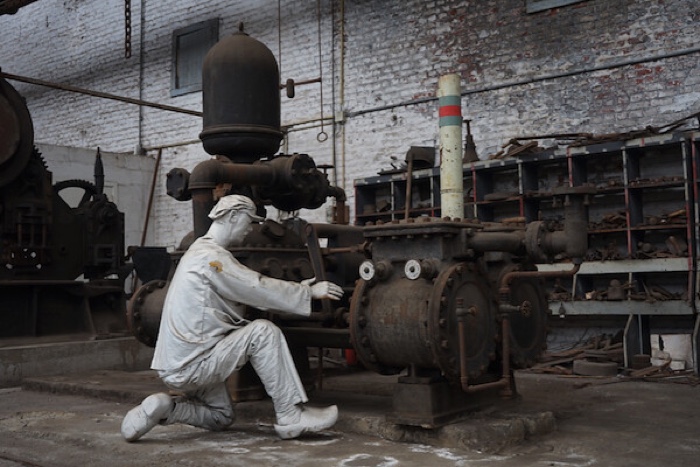
Alain Nsenga, Fantasmagoria, 2022
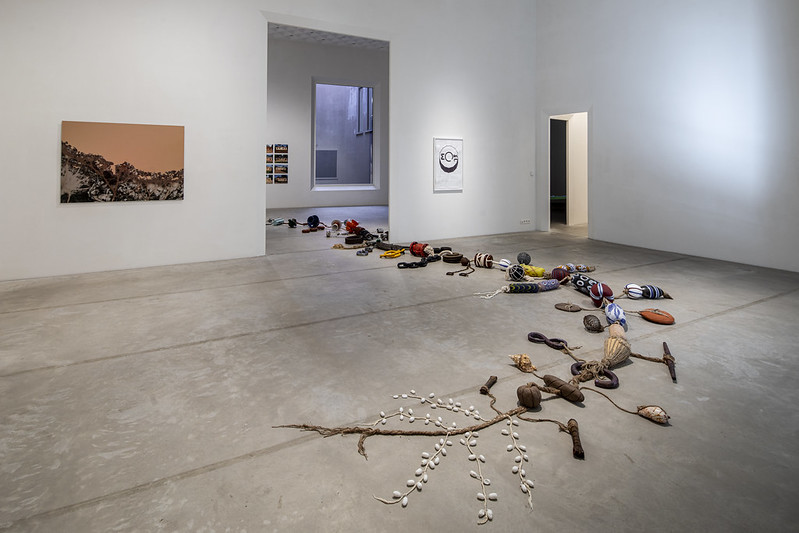
Installation view of On-Trade-Off. Charging Myths at Z33 House for Contemporary Art, Design & Architecture. Photo: Kristof Vrancken
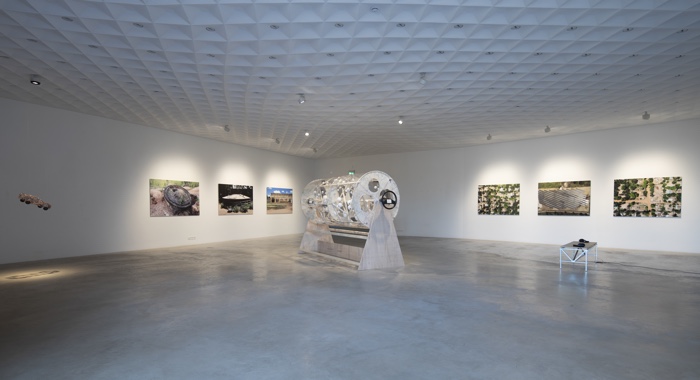
Installation view of On-Trade-Off. Charging Myths at Z33 House for Contemporary Art, Design & Architecture. Photo: Kristof Vrancken
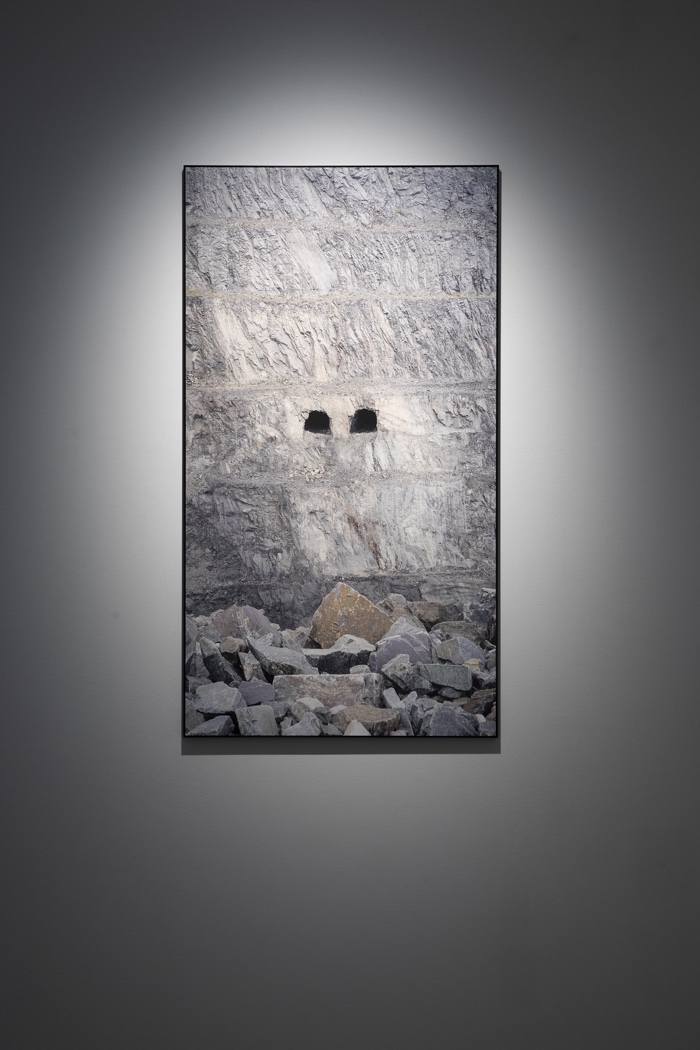
Alexis Destoop, The Pits, 2022. Installation view at Z33 House for Contemporary Art, Design & Architecture. Photo: Kristof Vrancken
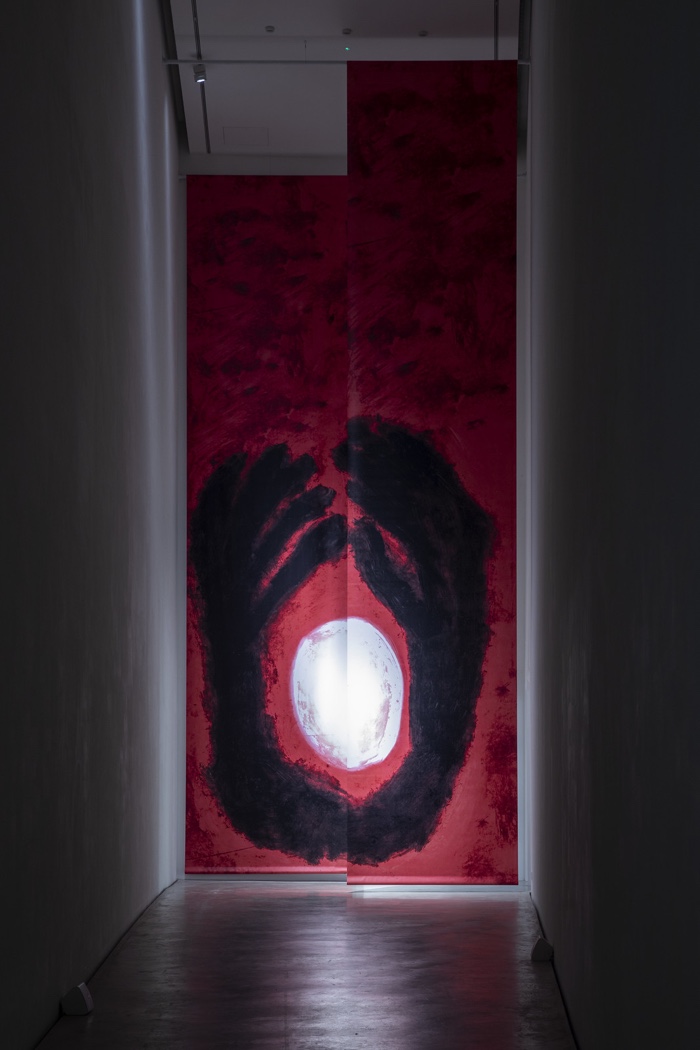
Pélagie Gbaguidi, Hunger, 2022. Installation view at Z33 House for Contemporary Art, Design & Architecture. Photo: Kristof Vrancken
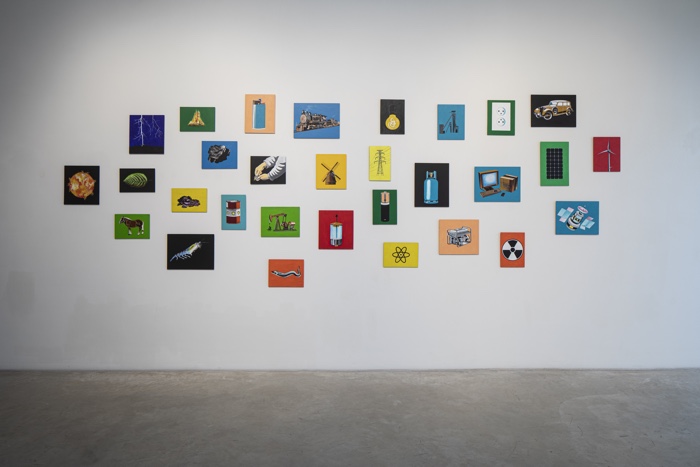
Maarten Vanden Eynde & Musasa, What All The World Desires, 2022. Installation view at Z33 House for Contemporary Art, Design & Architecture. Photo: Kristof Vrancken
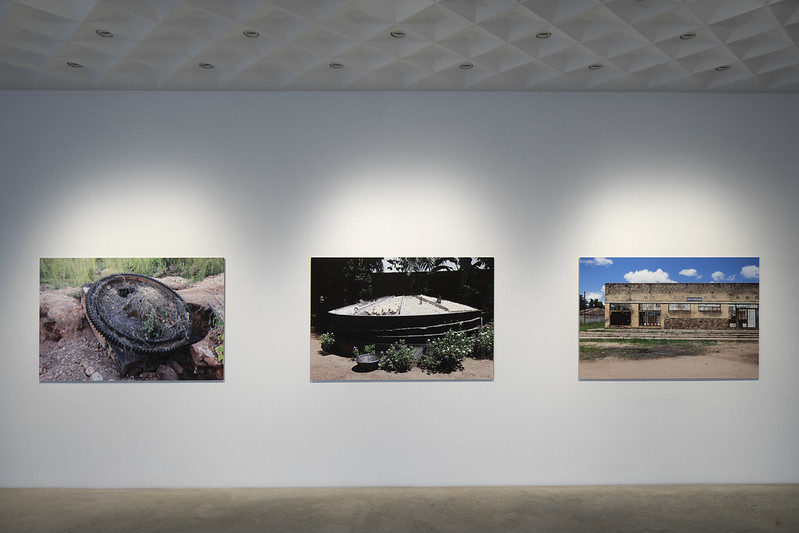
George Senga, Tshanga-Tshanga, 2022. Installation view at Z33 House for Contemporary Art, Design & Architecture. Photo: Kristof Vrancken
Charging Myths. On-Trade-Off is an artists-project, initiated by Atelier Picha (Lubumbashi) & Enough Room for Space (Brussels). Curators: the artists & Ils Huygens. The exhibition is a co-production of Z33 (Hasselt) & Framer Framed (Amsterdam). It remains open until 21 August 2022 at Z33 House for Contemporary Art, Design & Architecture in Hasselt, Belgium.
Related story: Kinshasa. Always on the move.


